Kamakura is a coastal town south of Tokyo, located just 90 minutes away from the capital. While in the 12th century, Kamakura was the political centre of Medieval Japan, today is a stunning tourist destination with numerous temples, shrines and even a beautiful bamboo forest.
Kamakura has historical sites as well as natural beauty with wooded hills and gorgeous beaches. The whole town has a nostalgic feel to it, staring from riding the Enoden, through buying street food and souvenirs from the Komachi street, to exploring the narrow, winding streets leading to the temples.
If you need a little break from Tokyo‘s epic (but sometimes tiring) neon lights, I recommend a day trip to Kamakura. A day is enough to see all the highlights and the most important sights, including the Great Buddha statue, the main attraction Kamakura is known for.
I went to Kamakura recently and was very pleasantly surprised by how much this seaside town has to offer. If you are in the area, I also recommend visiting Enoshima Island, which is less than 20 minutes away from Kamakura.
Here is my Kamakura itinerary, including the best things to do and the food you should try on your Kamakura adventure!
Tokyo to Kamakura by train
The best and fastest way to get to Kamakura is by train, with the JR Yokosuka Line or the JR Shonan Shinjuku Line. There is seldom any difference in time or price between the two lines, so it comes down to convenience. If you decided to stay in Tokyo closer to the Tokyo Station, take the JR Yokosuka Line. If you are staying closer to Shinjuku, Shibuya or Ikebukuro, then you’ll want to take the JR Shonan Shinjuku Line.
JR Yokosuka Line: The most straightforward route is to take the JR Yokosuka Line from Tokyo Station directly to Kamakura Station.
JR Shonan Shinjuku Line: Alternatively, you can take the JR Shonan Shinjuku Line from major stations like Shinjuku, Shibuya, or Ikebukuro. This line also goes directly to Kamakura.
This journey on both lines takes about an hour. The ticket costs ¥950 per person one way, or it’s free if you have a JR Pass.
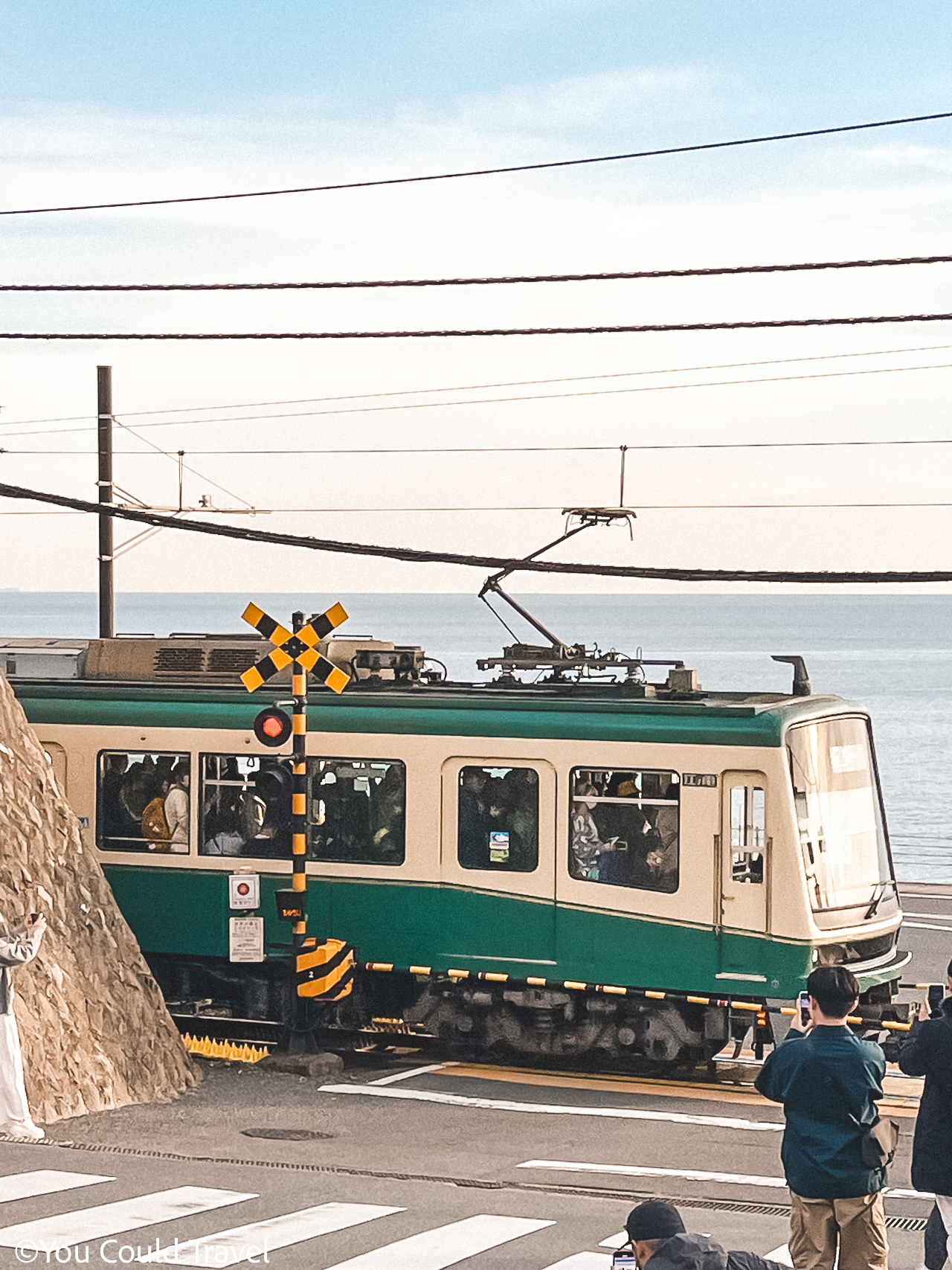
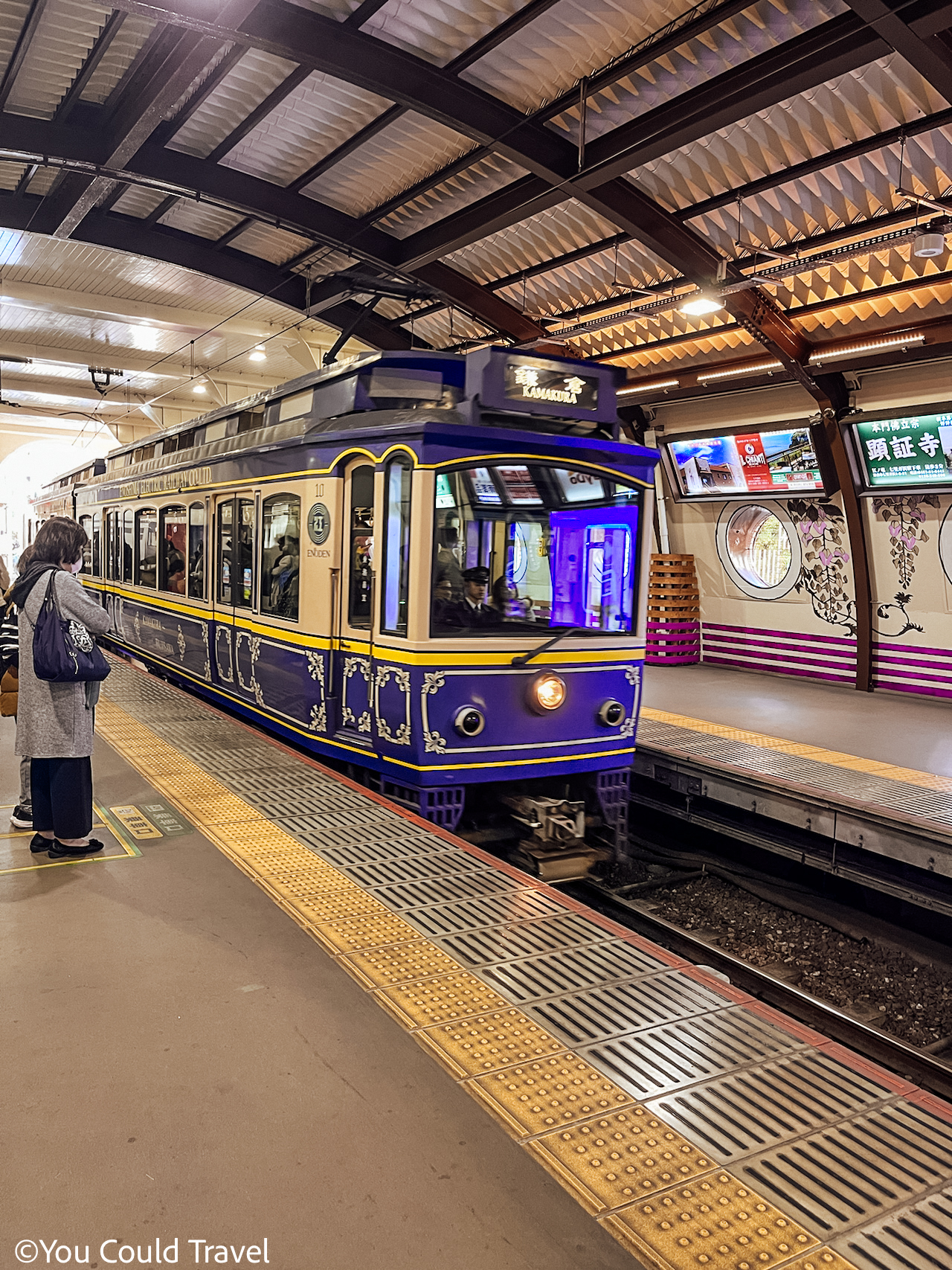
Alternative route on Odakyu Line
If you decide to also visit Enoshima Island as a day trip, it will be more cost-effective to rely on an Enoshima-Kamakura FreePass sold by Odakyu Railway. The journey from Tokyo Shinjuku Station to Kamakura will take around 1 hour and 45 minutes. The highlight of taking this route is riding the Enoden which is a historic and scenic tram-like train line that runs between Fujisawa and Kamakura, passing through Enoshima along the way.
The Enoden is famous for its nostalgic, small-size trains and the picturesque views it offers, including streetscapes and the ocean. The most popular stop on the Enoden is Kamakurakōkōmae Station which appeared in the popular anime Slam Dunk.
Important to know: The Enoden line has 4-5 trains an hour. It runs from 5 in the morning until 11 at night, so you can comfortably spend all day around Kamakura. The JR lines and Odakyu Line also operate until very late at night, so you don’t run the risk at getting stranded in Kamakura. Take your time and enjoy the day!
Day trip to Kamakura itinerary
I have visited Kamakura twice already, and each time, I find myself falling in love with it a bit more. From my experiences, I understand that visiting a small town in Japan might seem intimidating, but I’m here to share the best and easiest ways to navigate Kamakura like a pro.
My itinerary follows precisely in my footsteps and explains how you can make the most out of your trip to Kamakura. It helps you see the top attractions and highlights without feeling rushed.


Tsurugaoka Hachimangu
Entrance fee: Free
Daily Opening Hours: 5:00 to 20:30
Good to know: To fully experience the shrine, allocate at least a couple of hours here.
Located just 10 minutes walk from the Kamakura train station, Tsurugaoka Hachimangu is the most important and iconic Shinto shrine in Kamakura.
Tsurugaoka Hachimangu was founded in 1063 and later expanded and moved to its current site by Minamoto no Yoritomo in 1191.
The shrine is accessed via a long, straight street called Wakamiya Ōji, marked by three large torii gates.

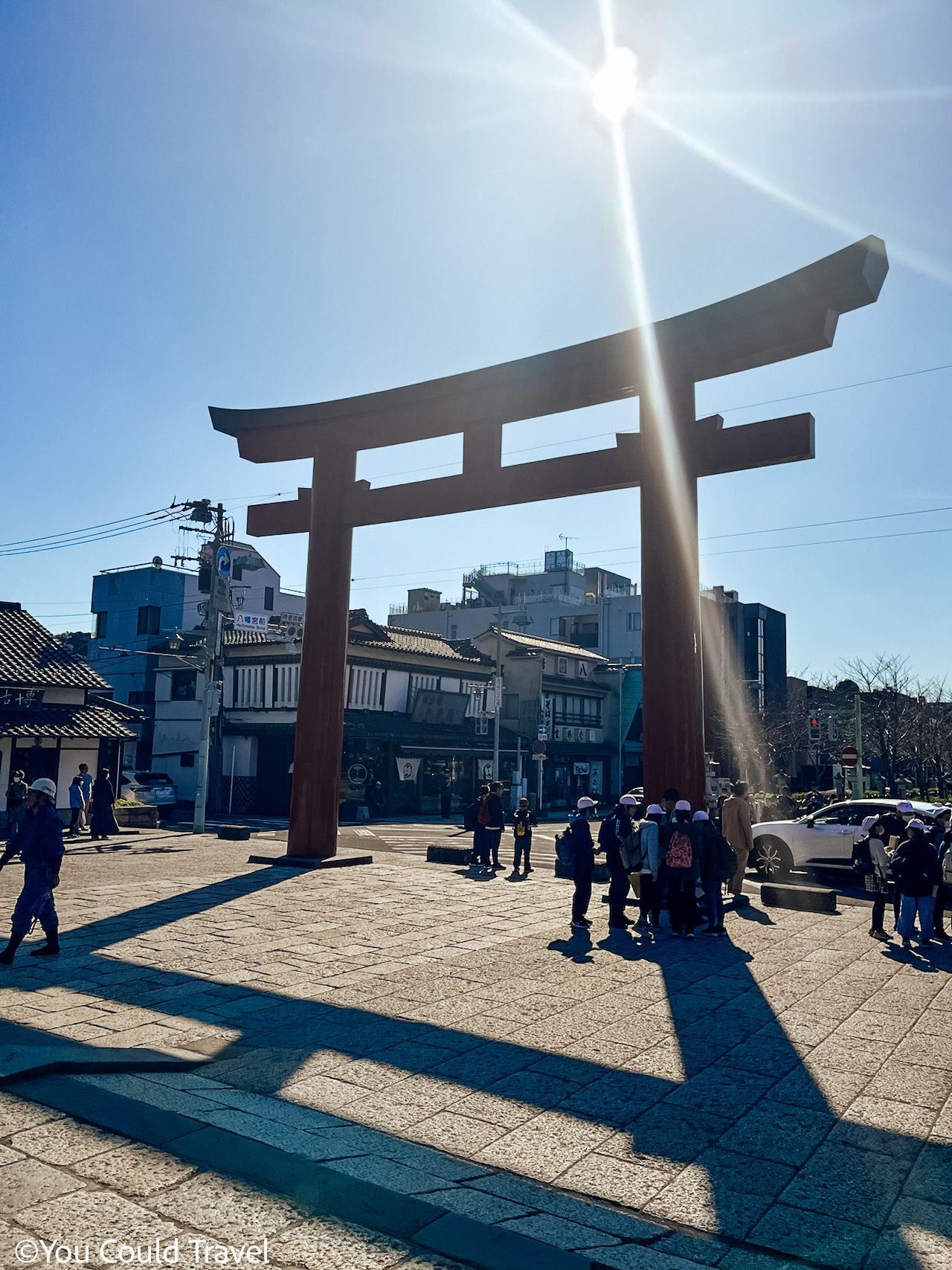
Near the entrance, two ponds named Genpei-ike represent the Minamoto (Gen) and Taira (Pei) clans. The contrasting colours of the lotuses in each pond symbolize the history of these clans.
The Senior Shrine (Hongū) is located on a hill and can be easily reached by a long, wide stairway. Like most Shinto shrines, red (akani) is the prominent colour here too, which is believed to offer protection from evil.
Situated below the stairway to the maiden pavilion which hosts various cultural activities, including weddings, dances, and music performances.
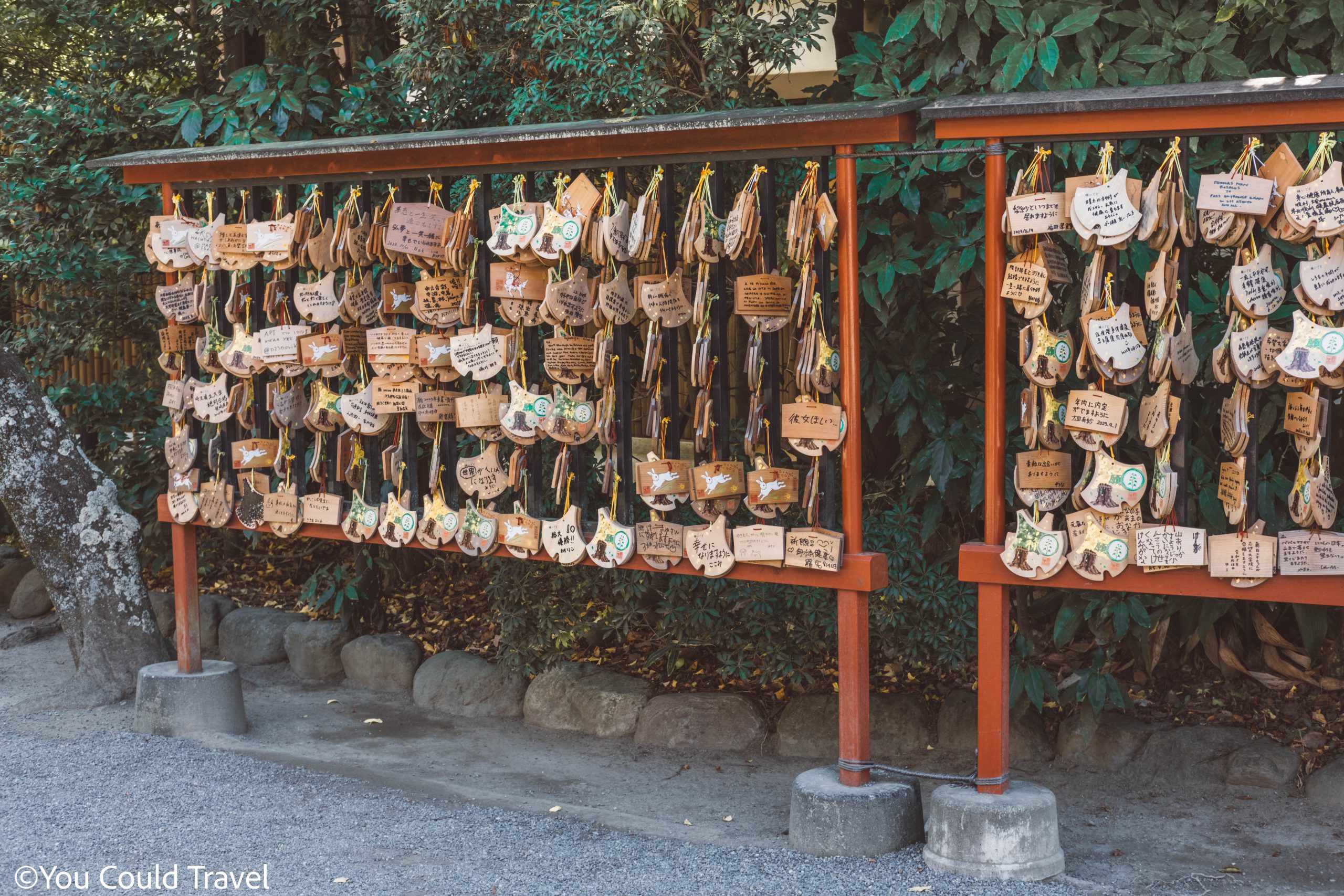
Notable sub-shrines include the Junior Shrine (Wakamiya) at the base and the Maruyama Inari Shrine located left of the Senior Shrine with its many torii gates.
The shrine grounds house the Kamakura Museum of National Treasures and the prefectural Museum of Modern Art.
Don’t miss: The Tsuru-kameishi stones are said to be like two ancient turtles and glisten when wet.
Hokokuji Temple
Entrance Fee: ¥400 for the temple only or ¥1000 for temple and matcha drink
Daily Opening Hours: 9:00 to 16:00 (teahouse 9:00 to15:30)
The next stop is the Hokokuji Temple, also known as The Bamboo Temple. In my experience, it surpasses even the famed Arashiyama Bamboo Forest in Kyoto in terms of its impressive atmosphere. The tranquillity here is unmatched, partly due to it being less crowded. This temple offers a sense of serenity from every viewpoint, making it a truly remarkable spot.
To reach Hokokuji Temple from Tsurugaoka Hachimangu take bus 23, 24 or 36 for 4 stops to Jomyoji bus stop. You can use cash (¥220) or your Japanese IC Card, but no credit cards are accepted. Alternatively, walk for 20 minutes by following the main Prefectural Road 204.
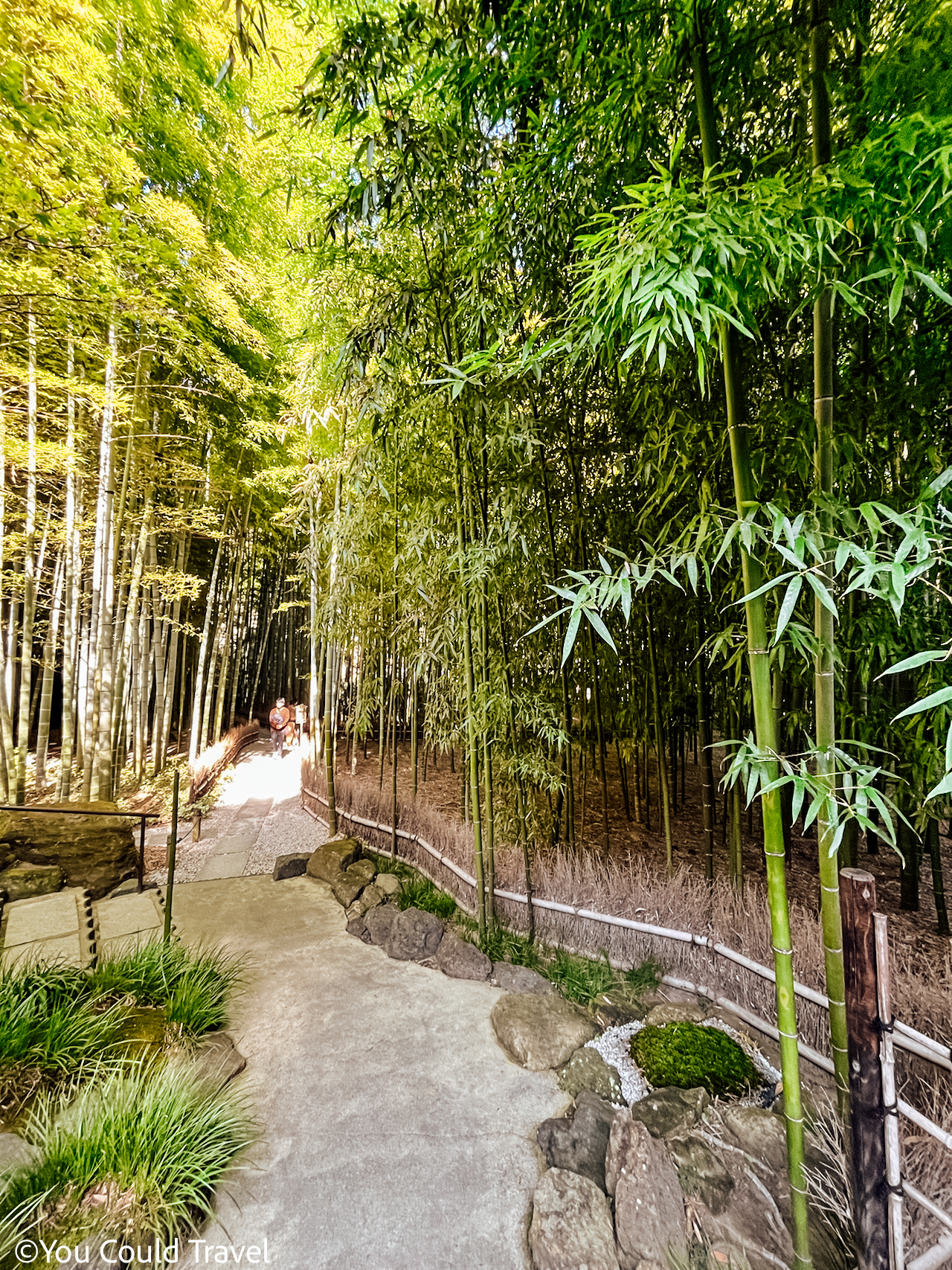
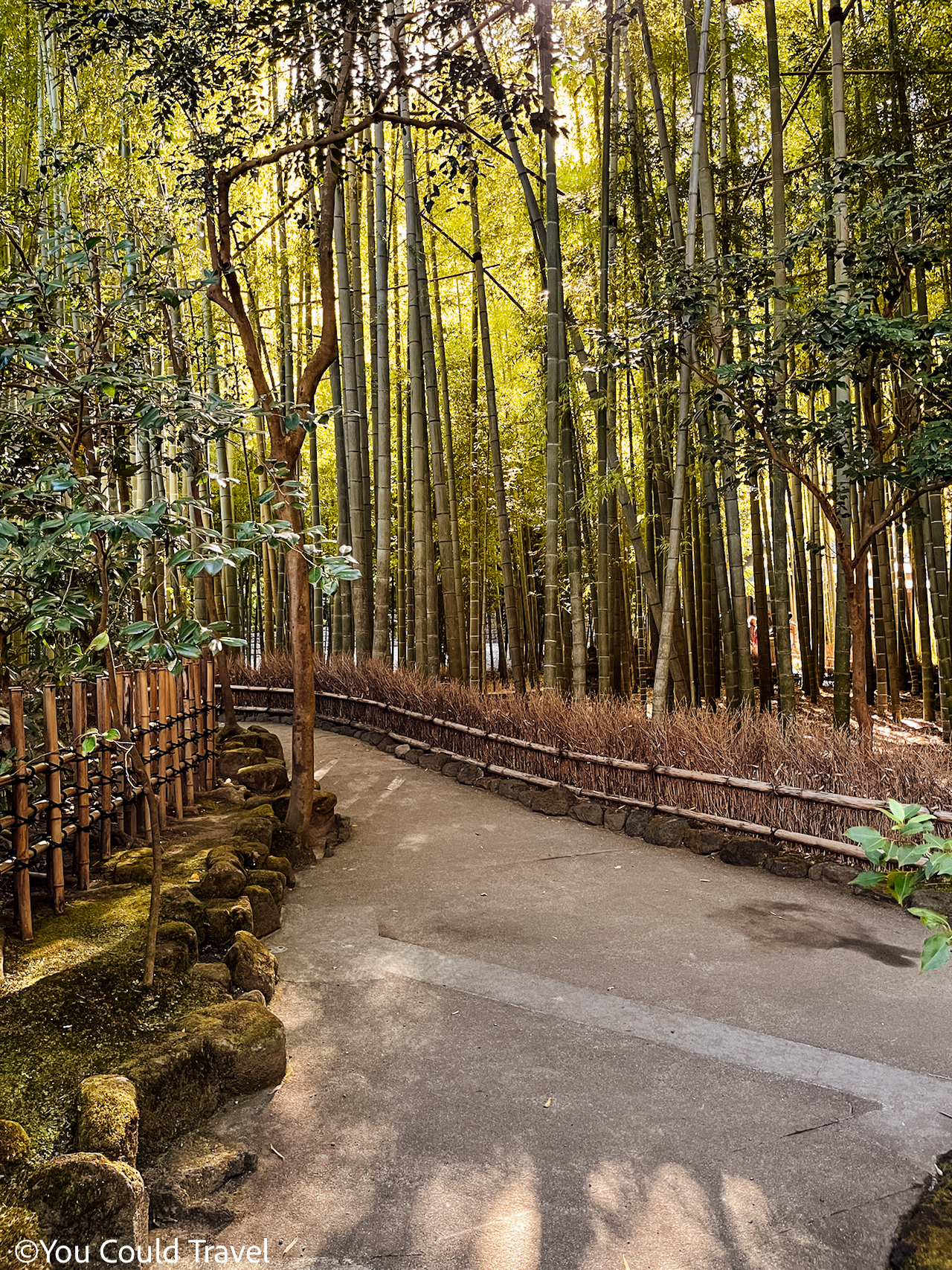
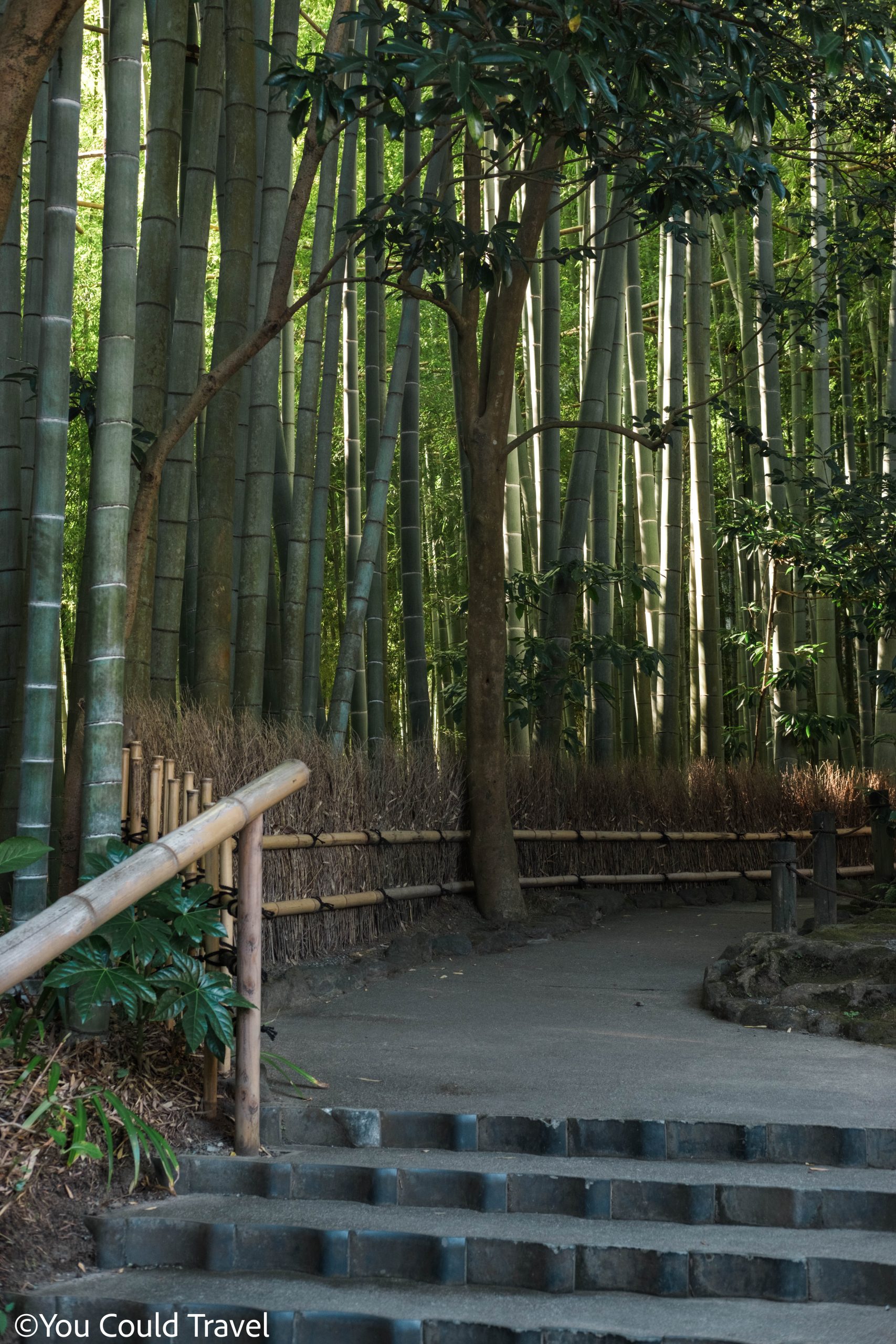
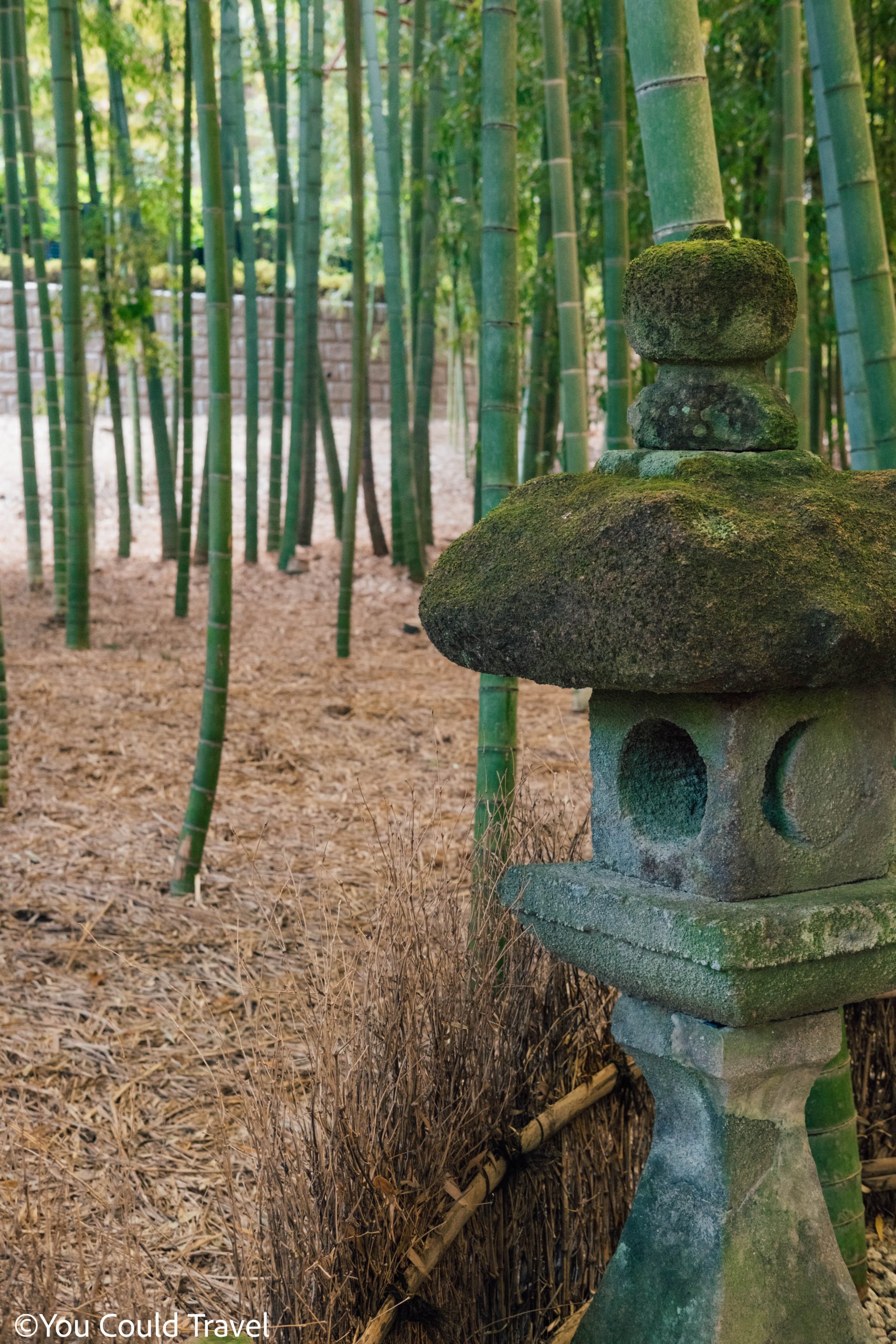
Hokokuji Temple belongs to the Rinzai Sect of Zen Buddhism and its main attraction is the 2000 Moso bamboo stalks. They are surprisingly dense and create a striking towering grove which gently sways in the wind.
Walk and explore the bamboo lined paths and gentle slopes which lead you to the Fallow Hermitage teahouse. Enjoy a freshly made matcha tea and dried sweets while looking out at the bamboo garden. It’s a truly meditative and zen experience.
The main hall of Hokokuji Temple, while more modest compared to other temples, holds its own charm. However, the true highlight of this temple is its garden. As you wander through, you’ll encounter several Buddhist figures, including a beautiful statue of Gautama Buddha. The garden also offers a view of the mountain-side tombs of Ietoki Ashikaga and Yoshihisa Ashikaga
Komachi-dori Street
Daily Opening Hours: The street is open 24/7 for strolling, but most shops are open 10:00 – 18:00.
Komachi-dori holds a special place in my heart as one of Kamakura’s highlights, being a 360-meter-long shopping street brimming with street food vendors and souvenir shops. I must admit, some of the best street food I’ve ever had in Japan was right here on Komachi-dori. The variety and abundance of food stalls here truly stand out, offering an array of delicious options.


Some of the must-try items I recommend are:
- Buddha-shaped manju – These are buckwheat and rice cake filled with red bean paste, chocolate, matcha or custard
- Mochi Taiyaki Waffles – Fish shaped waffled filled with matcha mochi or traditional red bean paste and custard
- Matcha Ice Cream – You can pick the strength of how flavoursome you want your ice cream to be. Number 7 is the highest intensity and slightly bitter but absolutely delicious. It’s my favourite ice cream and I always say to try it at least once while in Japan. If you are not a huge matcha lover, I recommend going for intensity 3 or hochija flavour, which is a lot milder.
- Soy-glazed dangoes – A very affordable and filling quick treat that’s packed with umami flavours thanks to the soy glazing and the seaweed on it.

You will also find plenty of souvenir shops here, but perhaps the most unusual gift I’ve found here was a beautiful-framed drawing of the Enoden pulling into Kamakurakōkōmae Station. It was something truly local and a great memory for years to come.
My top tip: Komachi-dori can get quite crowded, especially on weekends and holidays. For a more relaxed experience, consider visiting on a weekday.
How to get there: From Hokokuji Temple take the local bus number 23, 24 or 36 and ride it for 4 stops back to where you came from. From the bus stop, walk a couple of minutes to the entrance of Komachi-dori Street.
Kamakura Hasedera
Entrance fee: ¥400
Daily Opening Hours: 08:00 – 17:30 (April – June) | 08:00 – 17:00 (July – March)
Kamakura Hasedera is a temple with stunning seaside views and beautiful gardens. One of the main attractions is the wooden statue of Kannon, the Goddess of Mercy. This eleven-headed statue is 9.18 meters tall, and it’s one of the largest wooden Buddhist statues in the whole of Japan.
My top tip: If you love gardens, hydrangeas especially, then a stop at the Kamakura Hasedera is a must. Be sure to visit during the rainy season in June and July if you want to see their blue and purple hues.
Photography lovers will especially love Kamakura Hasedera as the temple’s hillside location offers breathtaking views over the town and Sagami Bay.
Throughout the temple grounds you will see the collection of small Jizo statues, which are considered guardians of children in Buddhism, particularly those who have passed away.
To get to Kamakura Hasedera ride the Enoden from Kamakura Station to Hase Station, then walk for 5-7 minutes to the entrance of the temple.
Kotoku-in
Entrance fee: ¥300
Daily Opening Hours: 08:00 – 17:30 (April – September) | 08:00 – 17:00 (October – March)
Kotoku-in is the most famous Buddhist temple in Kamakura, known for its monumental outdoor bronze statue of Amida Buddha. The large statue is also known as the Great Buddha of Kamakura (Daibutsu), and it’s just as popular as the one in Tōdai-ji in Nara.

The statue is 13.35 metres (43.8 ft) tall and is one of the most famous representations of Buddha in Japan. Cast in 1252, the Daibutsu is seated in the lotus position with a serene expression, symbolizing Amida Buddha.
This site is recognized as a National Treasure and is among the twenty-two historic landmarks featured in Kamakura’s submission to become a UNESCO World Heritage Site.
Perhaps the most surprising experience at Kotoku-in was the fact that I could enter the large statue. Just note that you need to pay an extra ¥50 to do so. The interior just shows the metal casting of the Great Buddha.
Throughout the garden you will find around 20 stone monuments with Japanese inscriptions on them as well as commemorative trees planted by King Prajadhipok, Crown Prince Vajiravudh and Prince Vajiralongkorn of Thailand. There are cherry trees and azaleas which look especially stunning in the Spring.
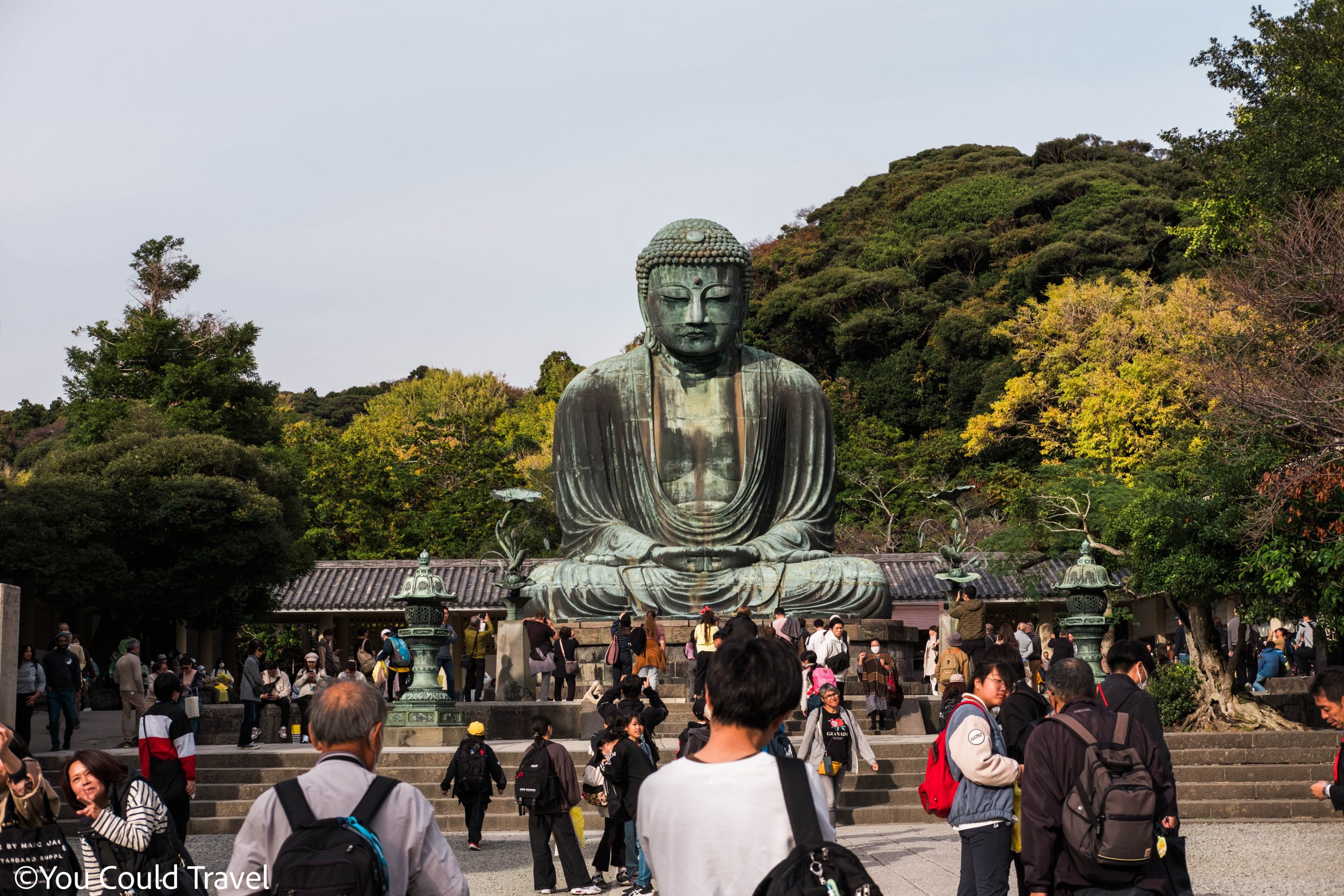
There are facilities on site, including toilets and a couple of vending machines for beverages. The temple store sells original Kotoku-in goods such as lucky charms, postcards, and temple stamp books. You will also find small boxes of sweet treats and my favourite, daruma dolls for around ¥600 each.
Insider Tip: Kotoku-in is a very popular tourist attraction and it does get busy. If you need a moment of tranquillity, head behind the Big Buddha statue, towards the back of the temple grounds. You can rest under the beautiful ginkgo trees with fewer people around.


Enoshima Island
After exploring the many temples, head over to Enoshima Island, a mere 15-minute journey on the Enoden line from Hase Station.
Enoshima Island is a breathtakingly beautiful spot in Japan. Although small, it is filled with fantastic sights and activities, including the Enoshima Shrine, the charming Benzaiten Nakamise Dori shopping street that echoes the feel of Kyoto, and the stunning Samuel Cocking botanical garden.
This island is also an ideal spot for viewing Mount Fuji at sunset on a clear day, and in my opinion, it offers one of the most spectacular views of Mt. Fuji-san.
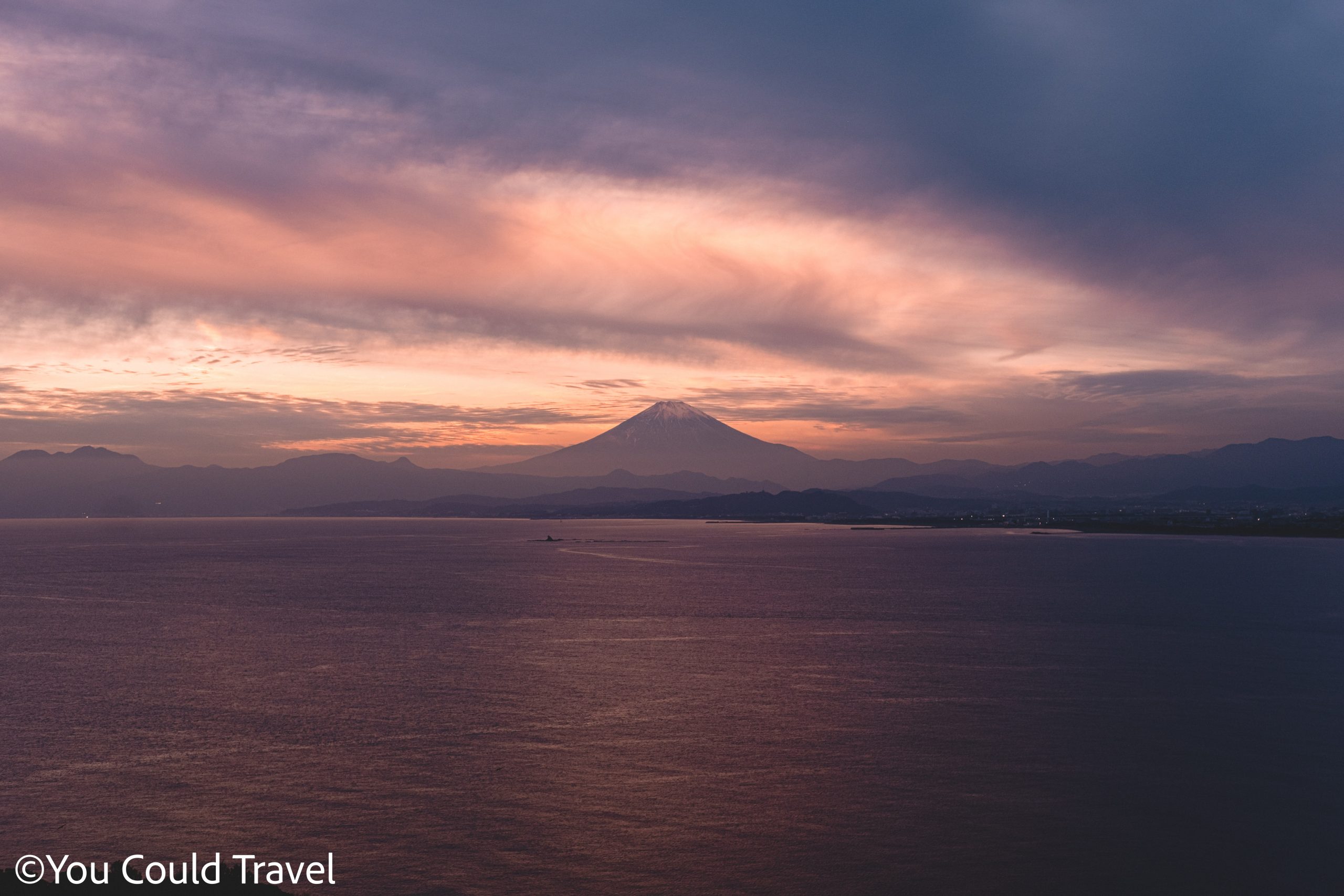
To get there, you’ll need to walk from Enoshima station and cross the Enoshima Benten Bridge. Even from this point, you can catch glimpses of Mt. Fuji.
Once on the island, make sure to explore Benzaiten Nakamise Dori. This street is reminiscent of the preserved streets in Kyoto’s Higashiyama area and is absolutely picturesque, lined with shops and restaurants. For a unique culinary experience, try the denim ice cream or denim steamed buns from the Shonan Denim Shop. As an unusual local delicacy, taste the shirasu ice cream – vanilla ice cream served with raw small white fish. It’s surprisingly delicious, though, the saltiness of the fish complements perfectly the sweet ice cream.
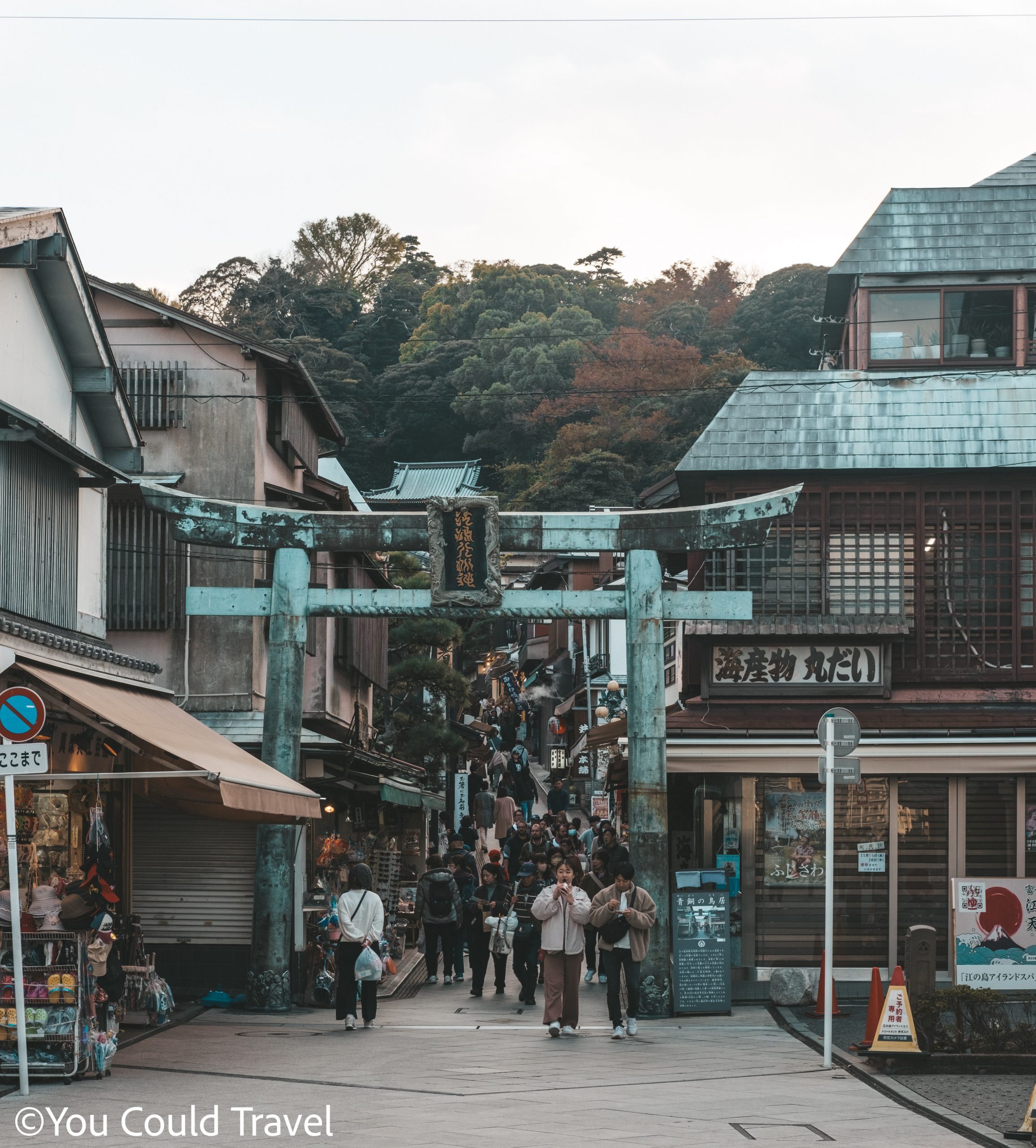
Entry to the Enoshima Shrine is free, and this expansive complex contains three ancient shrines: Hetsumiya Shrine, Nakatsumiya Shrine, and Okutsumiya Shrine. Be prepared for many stairs leading up to the top. If you’re feeling weary after a full day of exploration, consider paying ¥360 for the escalator ride.
At the top, the Samuel Cocking botanical garden awaits you. The entrance fee is 500 yen, which includes 200 yen for the garden and an additional 300 yen for the Enoshima Sea Candle. The Enoshima Sea Candle is a must-see; climb to its top outdoor platform for the perfect photo opportunity of Mount Fuji. I captured it at sunset, and to this day, I believe it’s the most hauntingly beautiful image of this iconic volcano.
Final thoughts about my day trip to Kamaura
Kamakura is an incredibly convenient and picturesque day trip from Tokyo, offering a more peaceful experience compared to the busier and more well known Hakone. It’s a place where you can immerse yourself in a day filled with temples, shrines, delicious food, and even views of Mount Fuji.
I was so enchanted by Kamakura that I visited it twice, and it remains one of my top destinations in Japan. What makes it truly special is its combination of elements found in various tourist spots across Japan, yet it’s surprisingly less crowded.
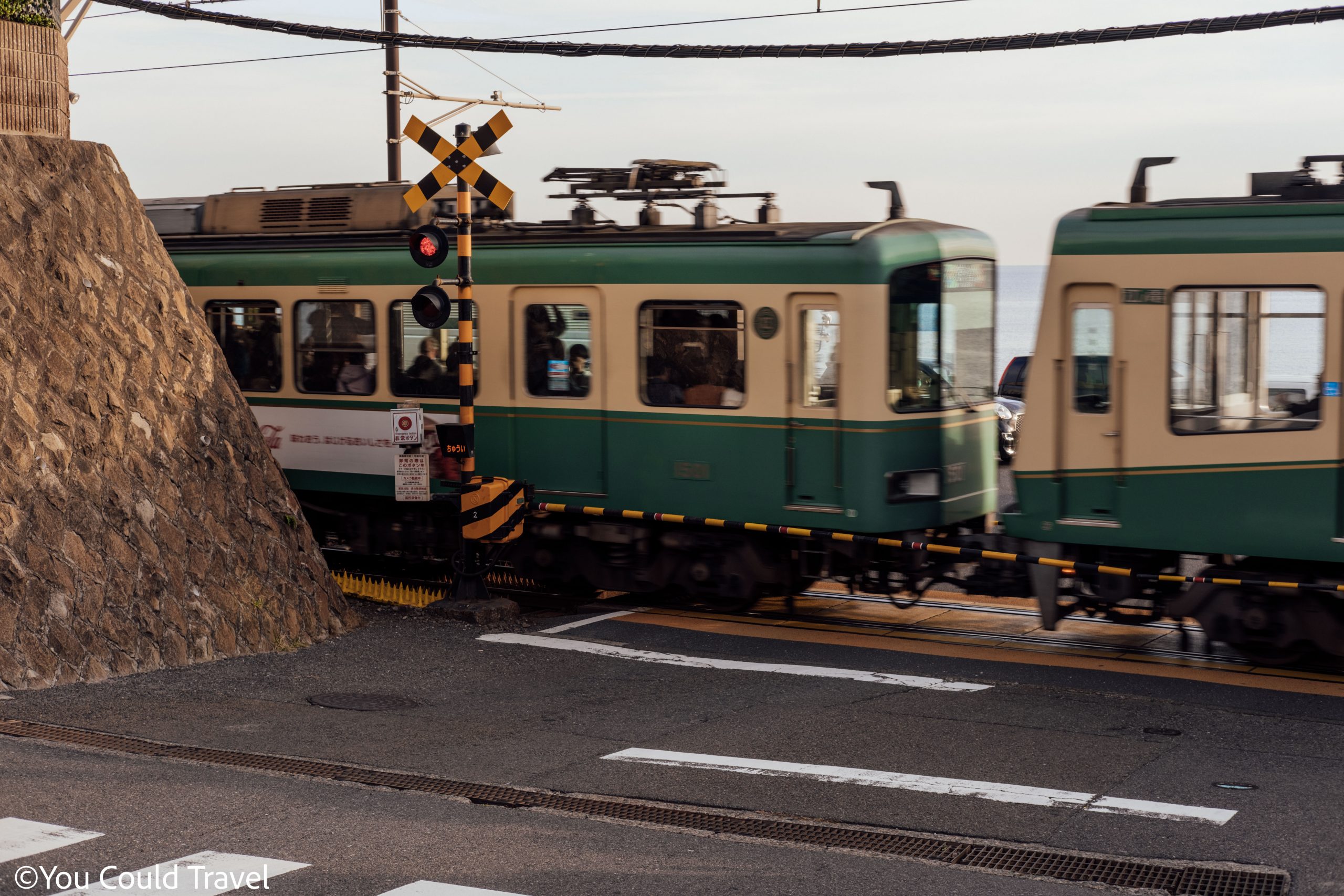
For instance, Tsurugaoka Hachimangu has stunning torii gates that remind one of Fushimi Inari Shrine. The serene bamboo grove at Hokokuji Temple rivals the famed Arashiyama Bamboo Forest in its beauty and tranquillity. Komachi-dori Street, akin to Nakamise Dori leading to Senso-ji in Asakusa, is one of the greatest shopping streets for food and souvenirs.
Kotoku-in, with its impressive Great Buddha, gives off vibes similar to the giant Buddha statues in Nara. Enoshima Island, feels like a slice of Kyoto with its well-preserved street and offers an incredible platform for viewing Mount Fuji.
Additionally, if you choose to stay a night or two, Kamakura has even more attractions including beautiful beaches such as Katase Higashihama Beach, Koshigoe Beach, and the idyllic Kamakura Yuigahama Beach.
A day trip to Kamakura is an essential experience when you’re in Japan, fitting perfectly into any itinerary length.


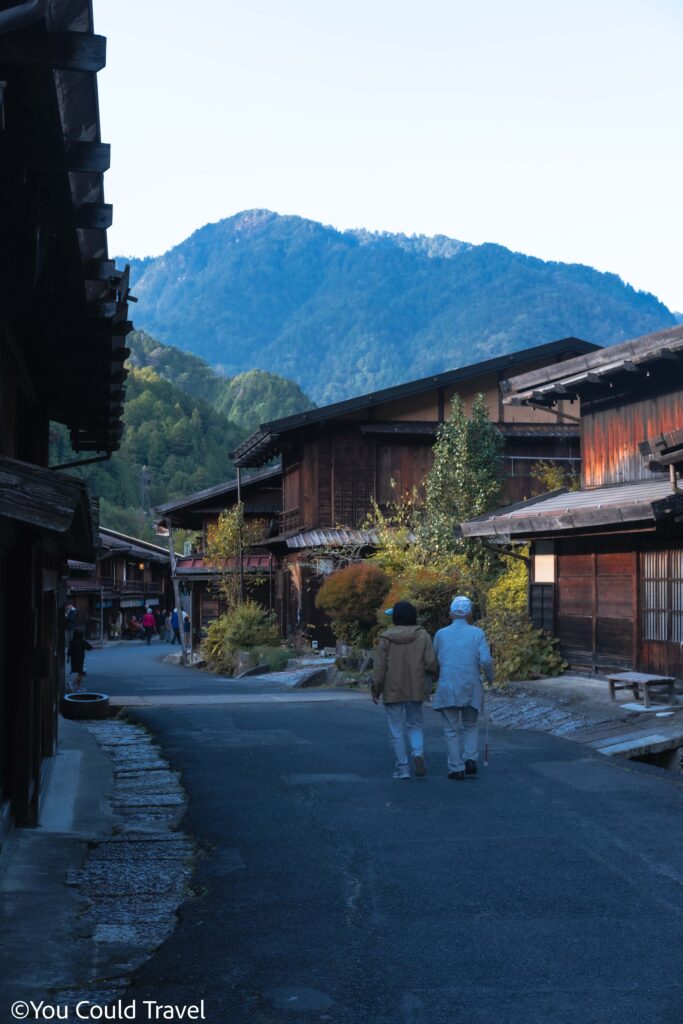

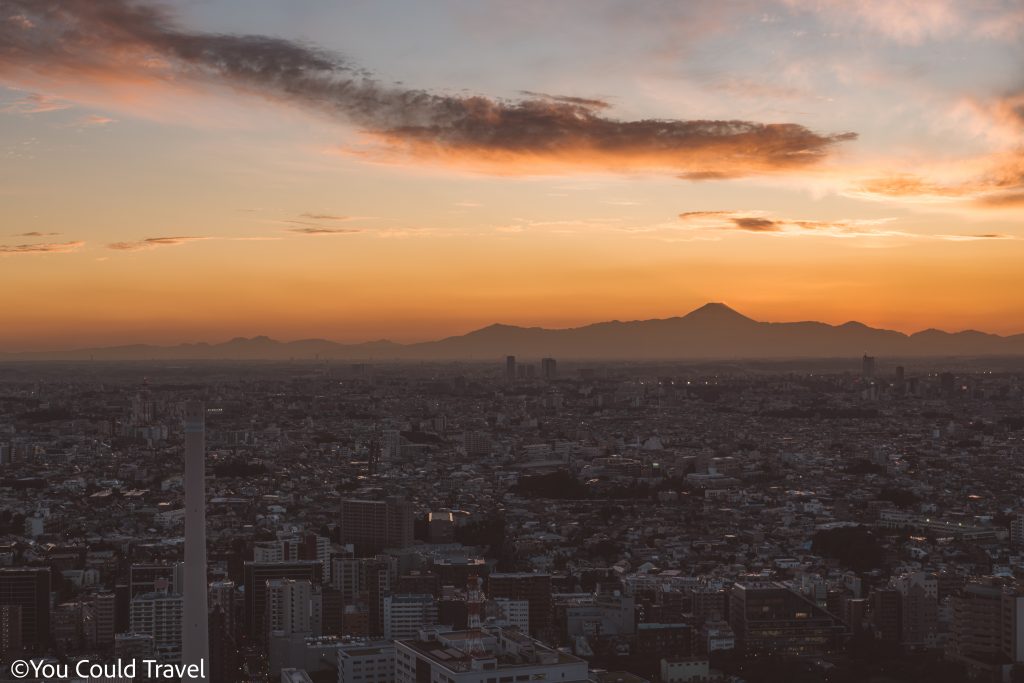




Leave a Reply